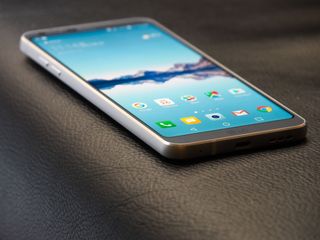Don't buy an LG G6 without a microSD card

The LG G6 is a great phone. But what's definitely not great is the way certain features, like the Quad DAC, wireless charging and 64GB storage model, are confined to a handful of specific regions. Of the three, the storage capacity restrictions imposed on Western G6 buyers is probably the most irksome. 32GB is only barely enough to include in a flagship phone in 2017. (I've laid out all the reasons against buying a 32GB phone here.)
In earlier Android flagships, a microSD card was an optional extra. With the G6, it's a necessity.
Nevertheless, the LG G6 is a great phone, even with its relatively cramped internal storage. That means if you plan on buying the new LG flagship, you'll want to invest in a microSD card, to offload heavier files like photos, videos and music. LG's camera app will default to using removable storage for photos and videos if it's available. And most popular streaming apps like Spotify and Google Play Music let you download tracks to your SD card instead of internal storage — though you'll likely have to manually flip that switch yourself.
AC editors are currently using pre-release U.S.-spec G6s with 32GB of storage, and these come with a little under 21GB of space for your own stuff, a whopping 11GB of space having been lost to formatting and system data. (Part of that is Android Nougat's new partition system for seamless updates working as designed.) After a little over a week with the G6, I'm down to 12GB remaining — that's with having a 128GB microSD installed for music and photos.
Without removable storage, I'd blow through that remaining dozen gigabytes in a couple of months, easily, with a little daily music streaming and photography. Which is why a decent SD card is a necessity, lest you fall victim to storage anxiety.
But be careful what you use your SD card for. Some apps can be moved to external storage through LG's software, but doing so will cause them to load more slowly and possibly impact performance in other, less predictable ways. Same deal with Android's Adoptable Storage feature, which debuted in Marshmallow and lets you format an SD card as internal storage. All this stuff comes with a performance-related price tag, so it's safer to just use your card for music, photos and other types of media, like Netflix downloads.
You'll also want to make sure you get a good, fast SD card, like one of the ones in our guide below.
More: Best microSD cards for Android
Be an expert in 5 minutes
Get the latest news from Android Central, your trusted companion in the world of Android

Alex was with Android Central for over a decade, producing written and video content for the site, and served as global Executive Editor from 2016 to 2022.
